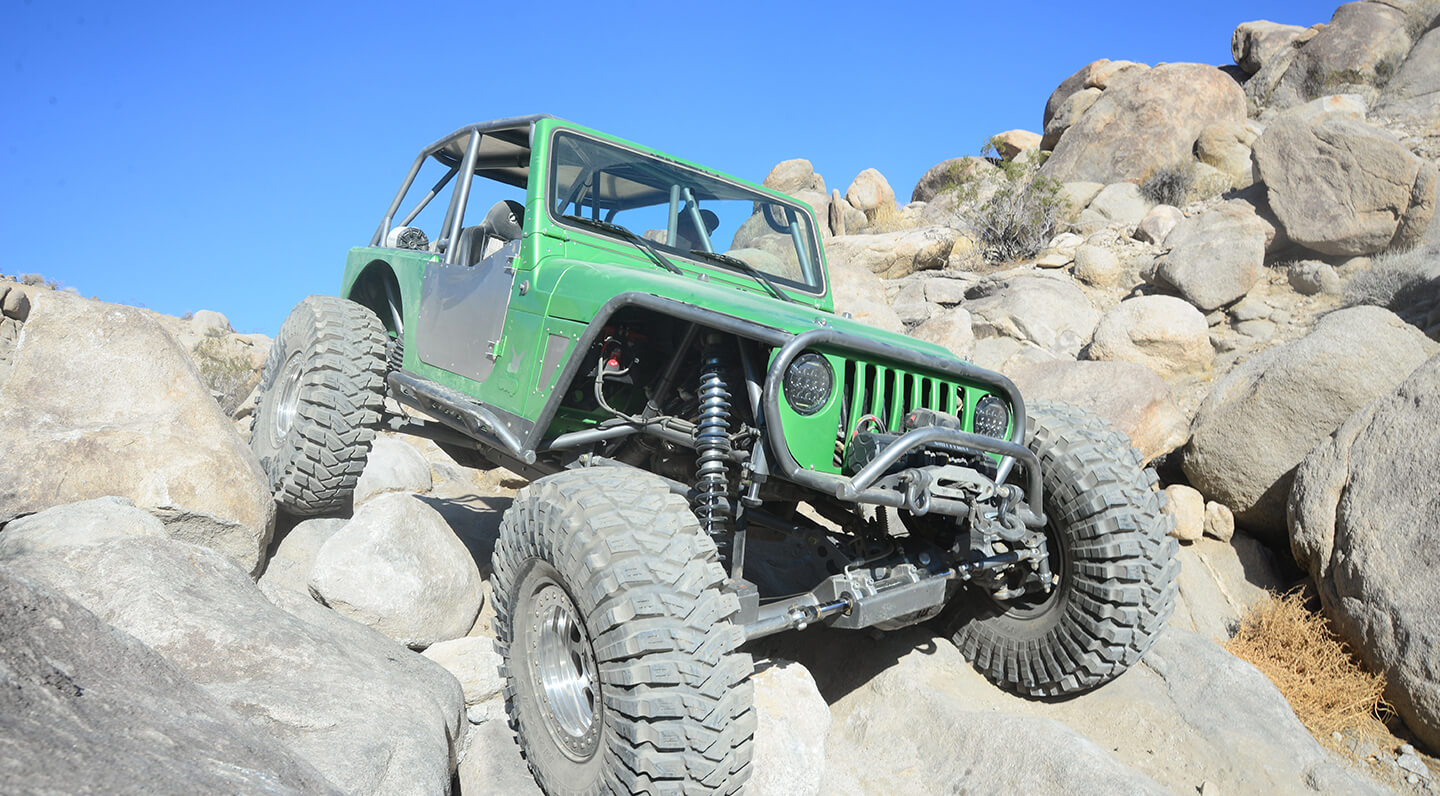
Photos: John Cappa and courtesy of the manufacturers
Pointing your 4×4 up a technical rocky trail and going rockcrawling for the first time can be a harrowing experience for a new off-road enthusiast that is worried about damaging their vehicle. There is seemingly little room for error between the shiny painted sheetmetal body panels and 300-million year-old granite. Don’t fret, the learning curve for successfully rockcrawling can be quick and painless if you know the basics, which is what we can help you with. No matter if you are just starting out or if you have many extreme rock crawling trails under your belt, the fundamentals are essentially the same. Read on and we’ll have you confidently crawling rocks in your 4×4 in no time.
When rock crawling, low and slow will generally offer the most successful results. Use the low range transfer case and transmission gearing to your advantage. The slower speed will help improve traction and give you time to develop a strategy to conquer the trail ahead.
Use Low Range
In most cases you’ll want to proceed up technical rocky trails in a slow and calculated manner. The best way to do this is to use the low range transfer case gear and the lower gears in your transmission. You can put manual and automatic transmissions in first gear to maintain a predictable speed. Using the lower gearing will also help keep automatic transmissions running cool and reliable. Literally attacking a tough rocky trail at faster speeds in high range can cause a loss of traction and vehicle control, which can ultimately lead to a bashed up underside, drivetrain failure and body damage. Take your time and let the low gearing and traction adding devices in the axles do the work.
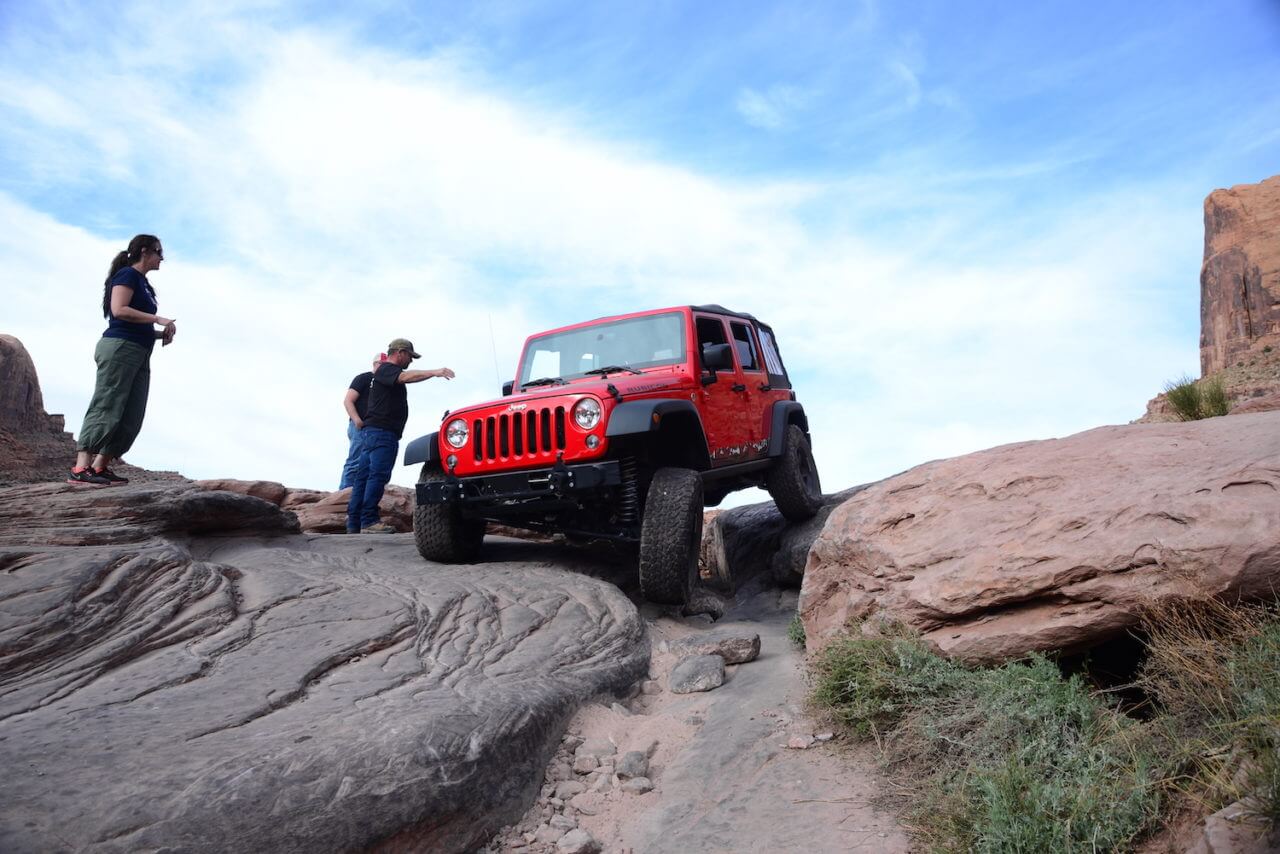
Leave plenty of room between you and the vehicle in front of you. Memorize the trail and where you want your tires to be placed as the terrain passes under your hood. Pick your spotters carefully. Not everyone is a good spotter, especially if they are unfamiliar with your off-road skill level and vehicle capability.
Memorize The Trail
Successful rock crawling in a 4×4 generally entails picking the smoothest line that keeps the vehicle level with the tires on the ground where they can make traction. This starts with knowing where your tires are and memorizing the trail in front of you as it disappears under the hood line. If your first line choice doesn’t work out or you slide off of it, you should be able to get lined up again without having to completely back out of the obstacle to take another look. Also, never follow too closely behind the 4×4 in front of you. If all you see is the back end of a 4×4, you aren’t looking at the trail. Observe the tire placement of the 4×4 in front of you and assess what line will work for you and what won’t. A spotter can help you navigate more challenging sections, but you can’t always depend on having a knowledgeable spotter that is familiar with the capability of your 4×4 and your driving skill level. Choose your spotters carefully. Just because they can see the trail better than you does not mean they know what they are doing. When all else fails, don’t be afraid to get out of your 4×4 and take another look at the trail in front of you.
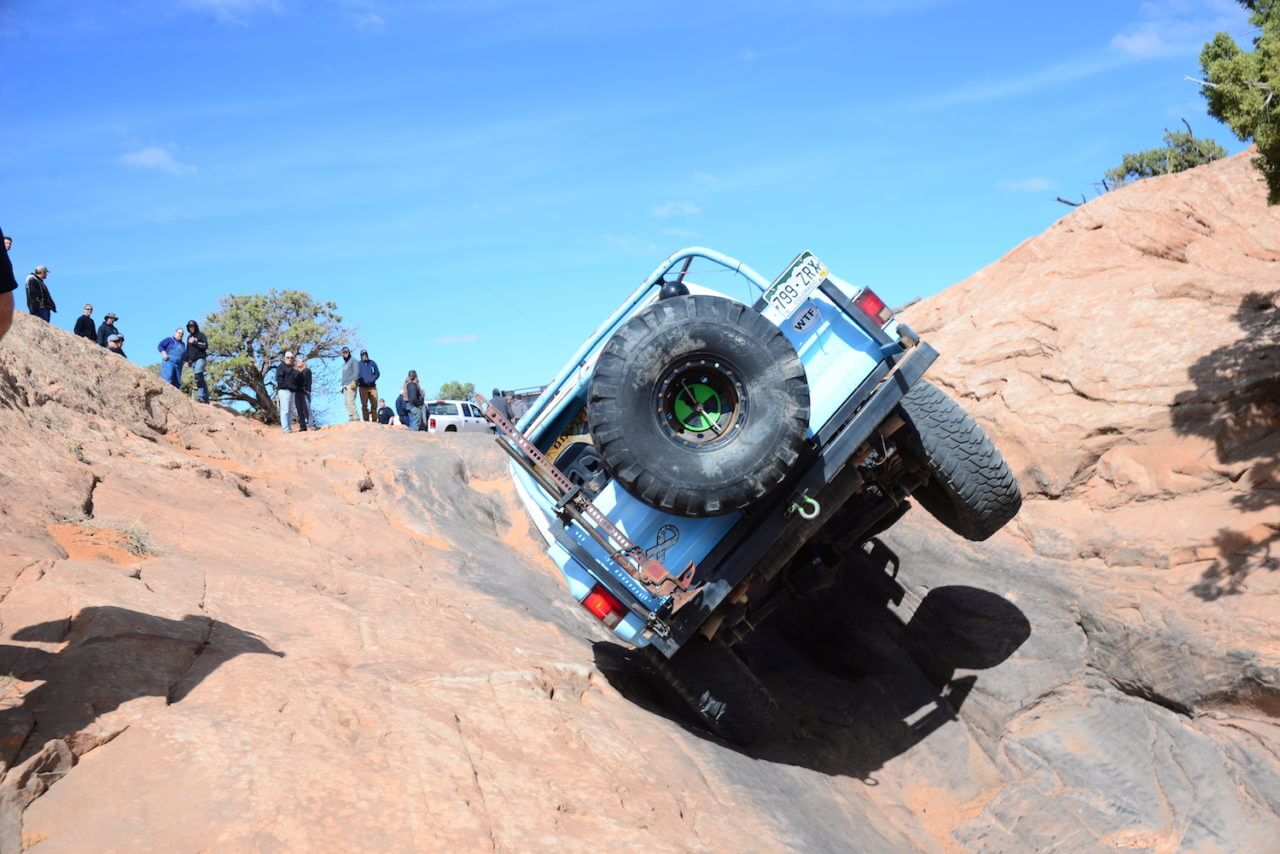
Not properly straddling ruts can result in some hair raising results. This guy was lucky he didn’t put his 4×4 completely on its side.
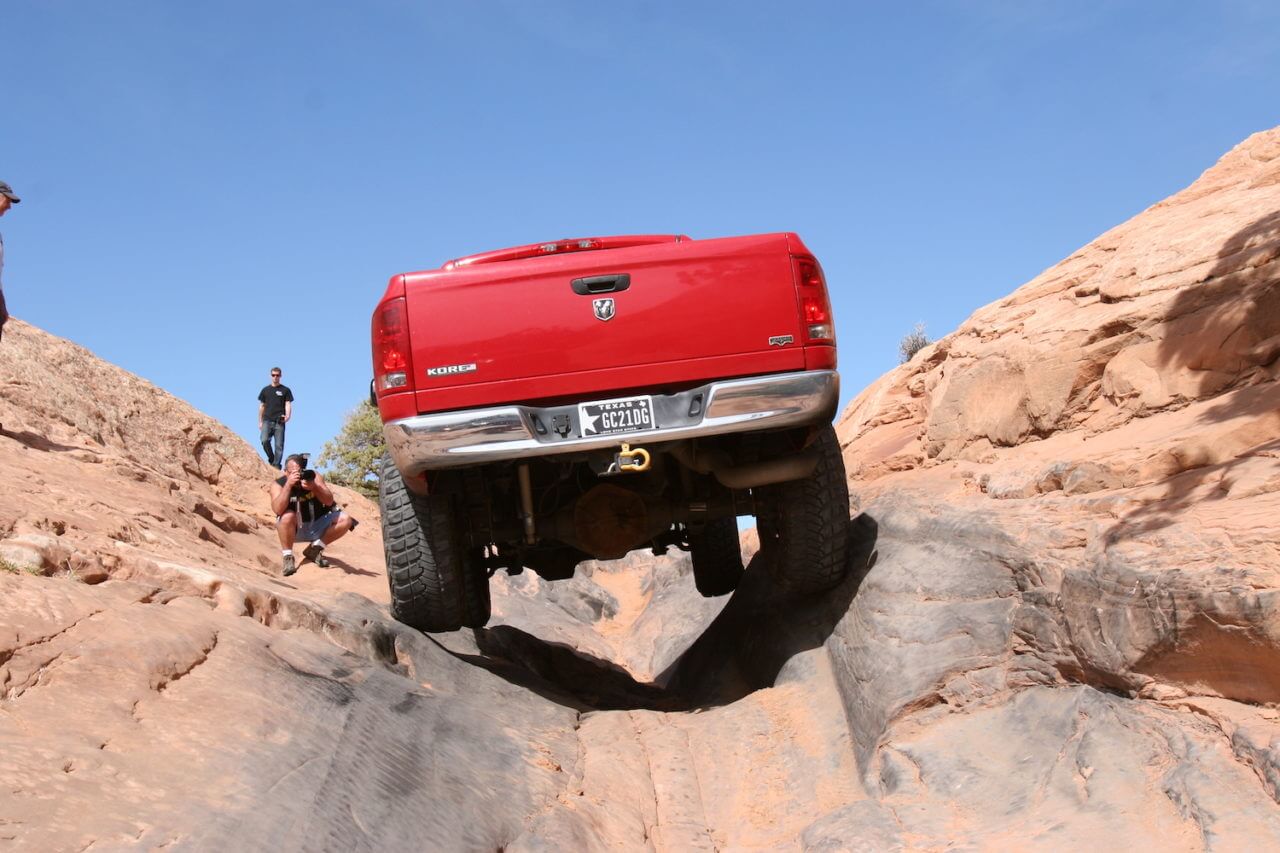
By comparison, correctly straddling the same rut as above provides a much safer and successful result. You can clearly see how the tire sidewalls make contact with the trail and keep the vehicle upright.
Straddle Ruts
Whenever possible you should straddle the holes and ruts in the trail. Most off-road worthy tires have robust sidewalls with tread on them. This portion of the tread can be utilized when straddling difficult sections of trail. Of course stretched out suspension and tires hanging in the air makes for cool photos, but it can be risky if there is a smoother safer line through a rocky section. Lifting one of your four tires off of the ground could essentially reduce your potential traction by 25 percent. Also, avoid letting your tires fall into holes and ruts. Dropping into a hole puts the body and undercarriage closer to the rocky terrain where damage can happen. It makes it easier to get hung up and stuck too.
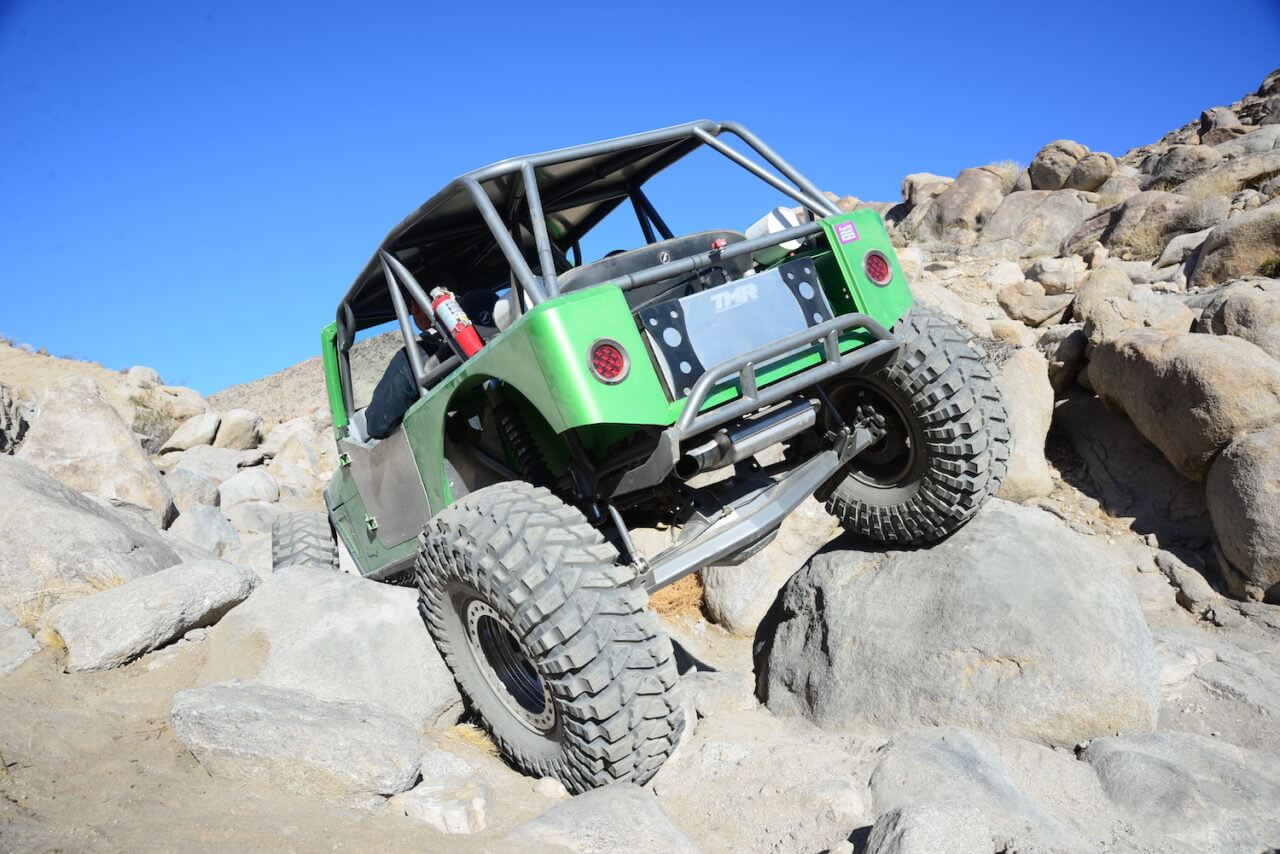
Carefully selecting the rocks to place your tires on will help improve traction and ground clearance, which keeps your 4×4 moving forward. You may need to steer clear of larger boulders. Try to keep the body of your 4×4 as level as possible for best stability and traction.
Lifting a tire might look cool in images you can show your buddies, but it can significantly reduce traction and vehicle control, even with locking differentials. Selecting a smooth line without letting your tires fall into holes or deep ruts will increase your rock crawling success.
Place Tires On Rocks
In the same way you want to straddle ruts, you should look to place your tires on top of rocks along the trail, rather than in the low points around the rocks. This practice keeps your drivetrain and body away from granite where it can get hung up or damaged. Look for reasonable lines that chain a path over the top of specific rocks and around the larger protruding rocks that can’t be climbed or straddled. Ultimately, the idea is to keep the body of the Jeep as level as possible and all of your tires on the ground. This creates the most traction and stability, which keeps you moving forward up the trail.
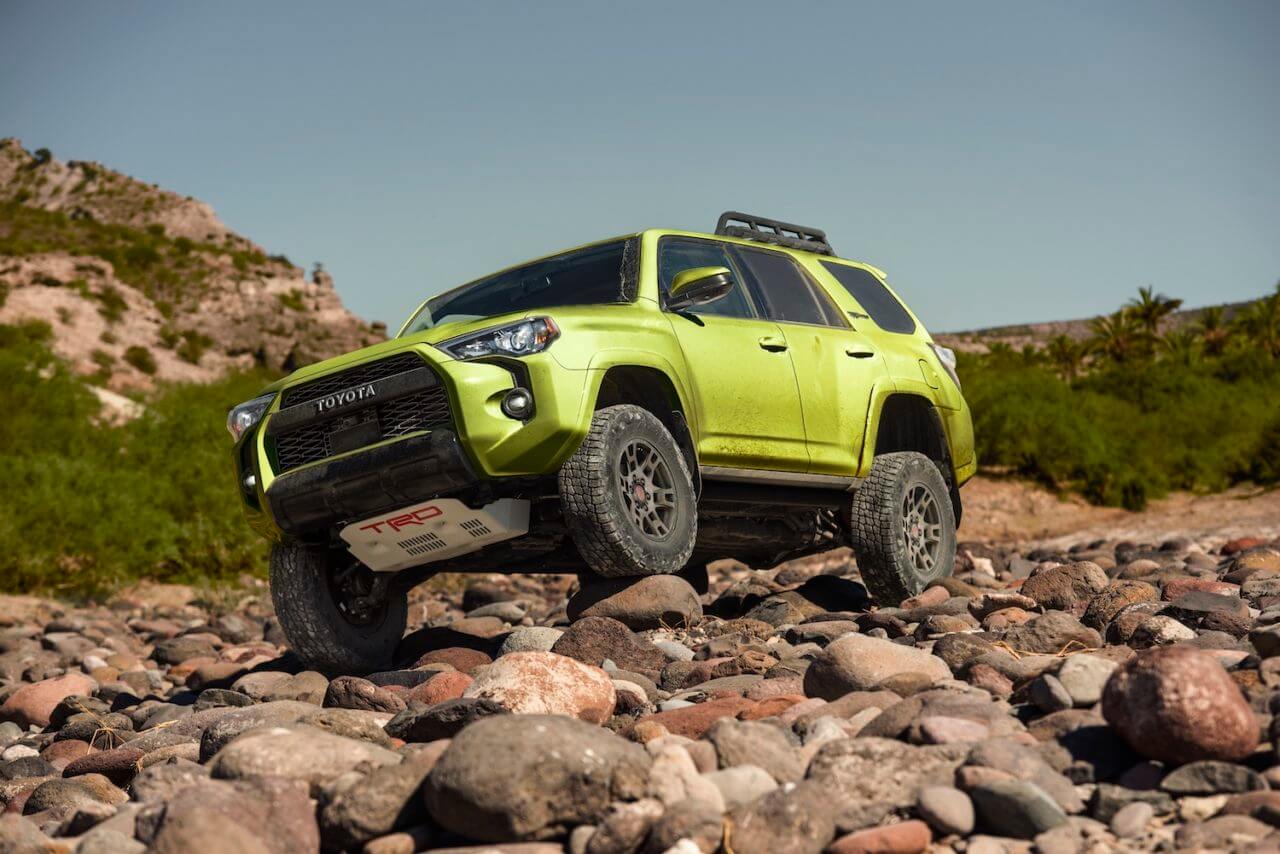
It’s not always necessary to place your tires on rocks, but this example clearly shows the increased ground clearance that is affords. Mentally chain and follow a path of rocks you can straddle to maintain ground clearance as you navigate the trail ahead.
Learn Threshold Traction
Tire spin is generally not your friend when successfully rock crawling. Making use of threshold traction to improve forward momentum is similar to what racers call threshold braking when stopping on pavement. Threshold traction is that point just before your tires lose traction from too much throttle input on a given surface. Learn to feel for threshold traction on different terrains to avoid tire spin. The more time you spend learning this technique, the better you’ll get at it. You’ll eventually acquire the ability to modulate the throttle to maintain predictable and controlled tractive wheel speed without tire spin. This will let the aired down tires slowly conform around the rocks and do the work by providing better grip.
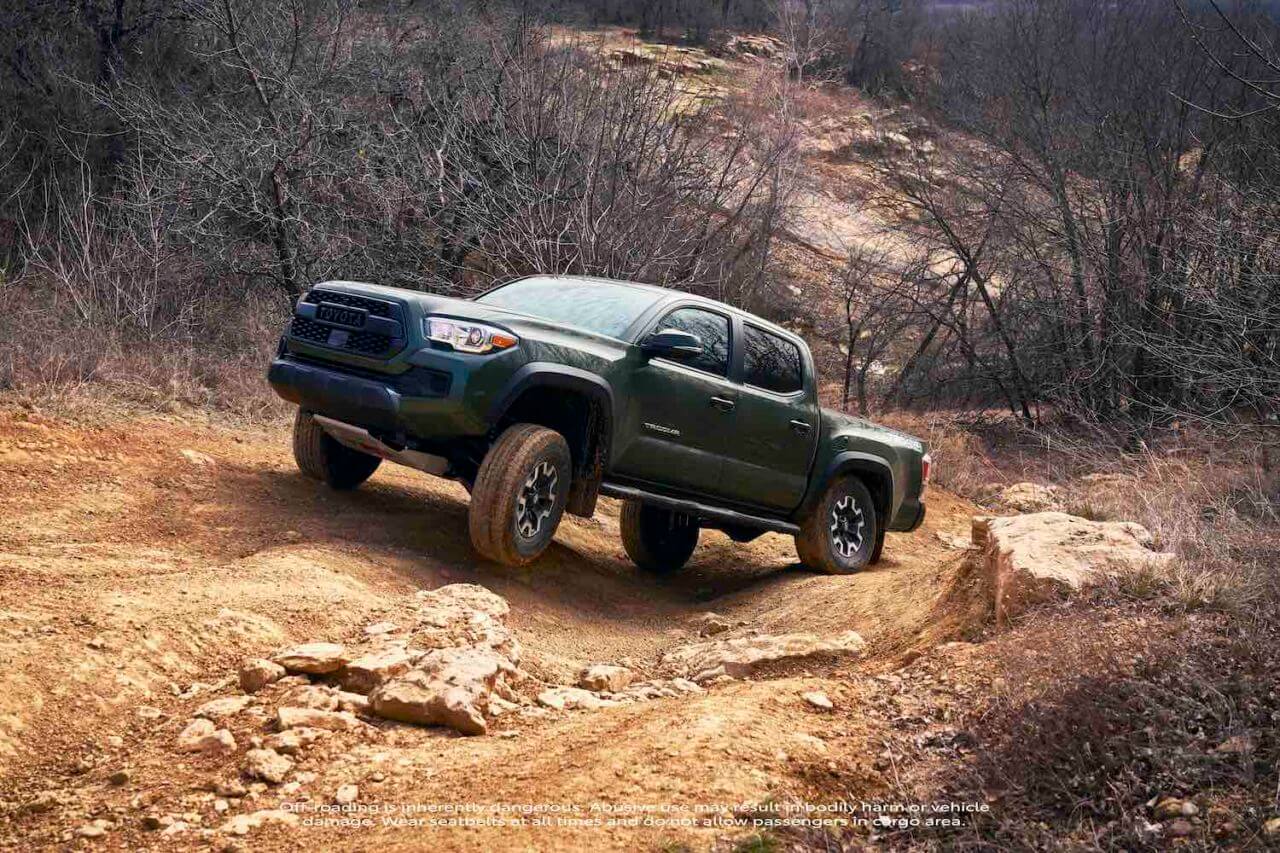
Be sure to always select a trail that is within you and your vehicle’s capability. Start in the small rocks and work your way up. Don’t be afraid to walk a trail or ride with a friend before pointing your steering wheel into the entrance of a rocky route.



2